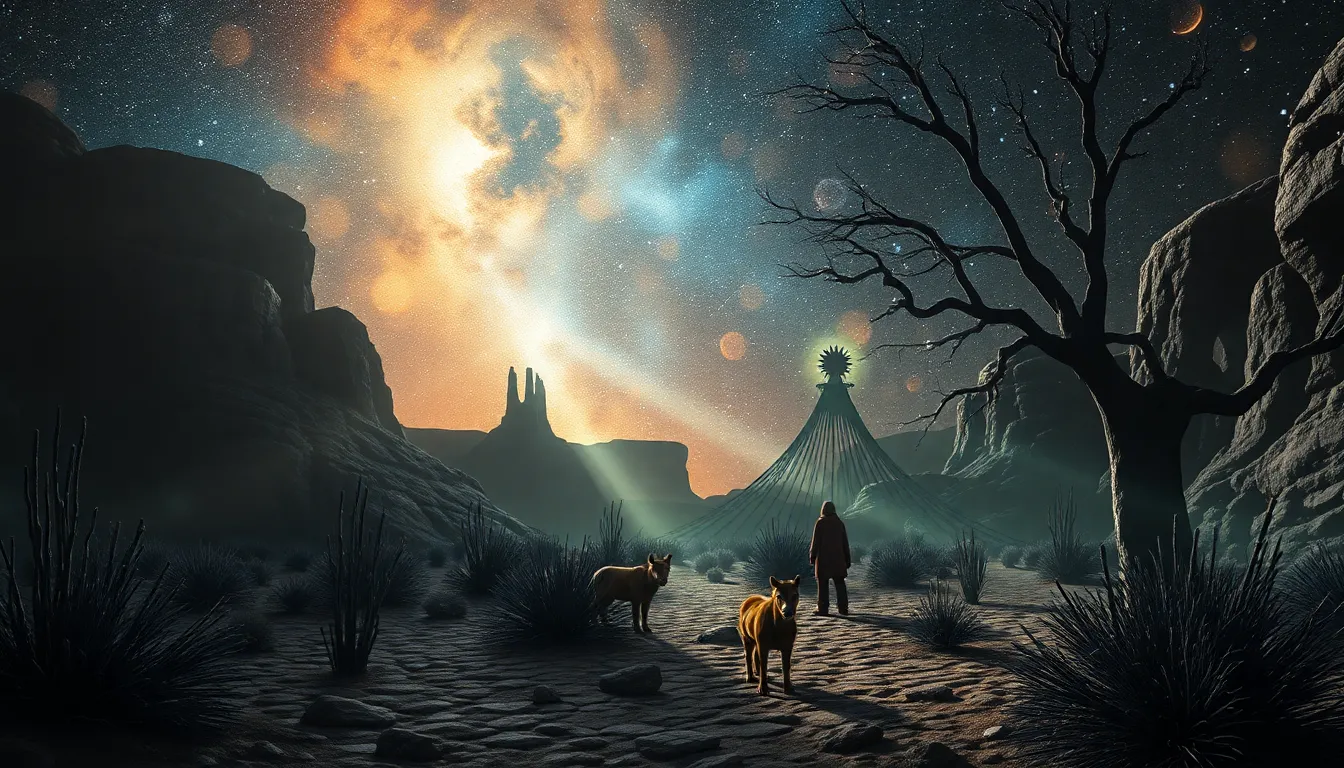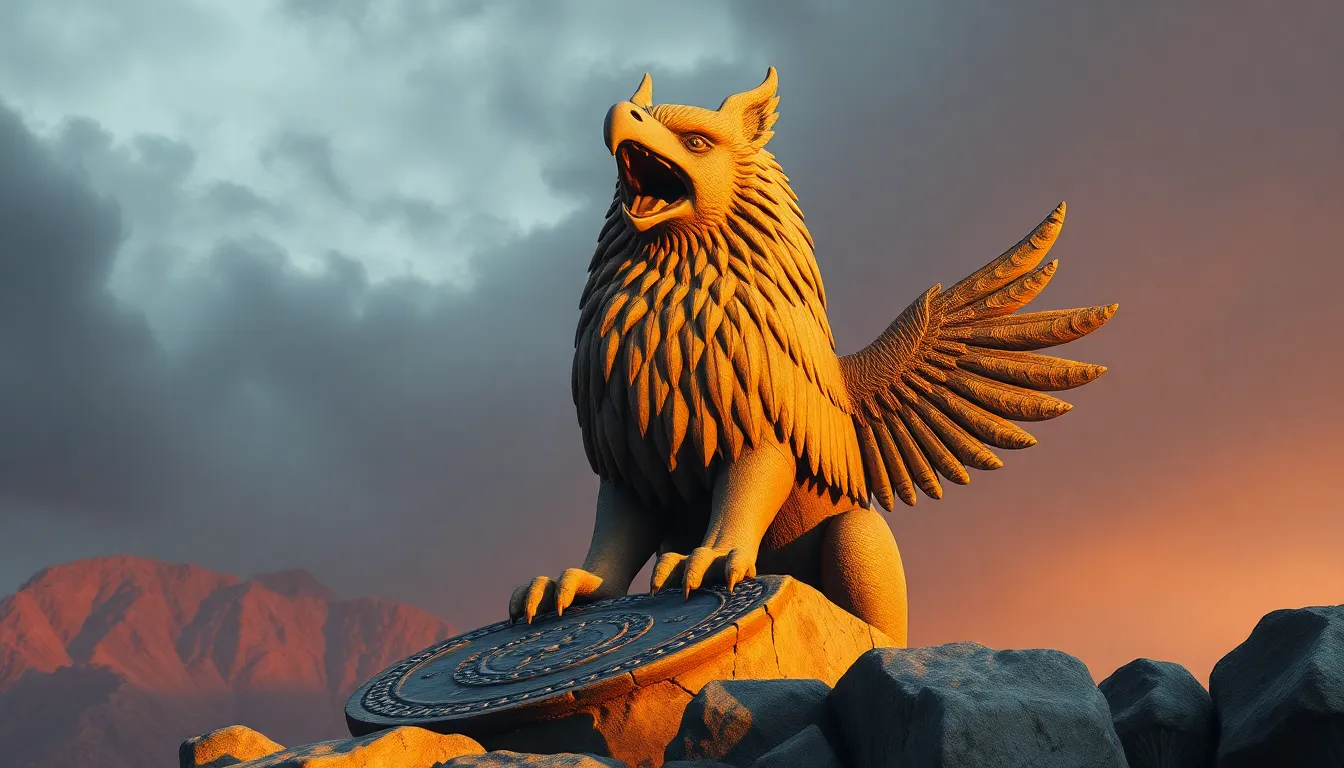The Lore of the Land: Exploring the Spirits of the American Southwest
I. Introduction
The American Southwest is a region steeped in rich cultural heritage, where the landscapes tell stories that span millennia. The rugged mountains, expansive deserts, and winding rivers are not merely geographical features; they are woven into the spiritual fabric of the indigenous peoples who have called this land home. Central to their beliefs is the significance of spirits and lore, which serve as guiding forces in their lives.
This article aims to explore the interconnectedness of land and spiritual beliefs in the American Southwest, revealing how the environment shapes the narratives and practices of its indigenous communities.
II. Historical Context of the Southwest
The history of the American Southwest is deeply intertwined with the indigenous peoples who have inhabited the region for thousands of years. Groups such as the Navajo, Hopi, Zuni, and Pueblo peoples have rich cultural traditions that reflect their deep connection to the land.
Ancient civilizations, including the Ancestral Puebloans and the Hohokam, established complex societies characterized by impressive architecture, agriculture, and spiritual practices. Their understanding of the cosmos and nature was reflected in their ceremonies and rituals, which sought to maintain harmony with the world around them.
However, the arrival of European colonizers had a profound impact on these native beliefs and traditions. The imposition of foreign religions, coupled with attempts to erase indigenous cultures, led to significant disruptions in spiritual practices. Despite these challenges, many indigenous communities have persevered, adapting and revitalizing their traditions in response to modern influences.
III. The Role of Nature in Spirituality
In indigenous spirituality, nature plays a vital role. Sacred landscapes—mountains, deserts, and rivers—are not only sources of sustenance but also embodiments of spiritual significance. For many tribes, these natural features are seen as living entities, deserving of respect and reverence.
- Mountains: Often viewed as sacred places, mountains are believed to be homes of powerful spirits and deities.
- Deserts: The vast arid landscapes symbolize resilience and endurance, teaching important lessons about survival and adaptation.
- Rivers: Flowing waters are seen as life-giving forces, representing the interconnectedness of all living things.
Moreover, animals and plants hold significant symbolism in indigenous lore. For instance, the coyote is often portrayed as a trickster figure, embodying both wisdom and folly. Similarly, various plants are utilized in rituals and ceremonies for their medicinal and spiritual properties, reinforcing the belief that the land is a living entity that nourishes both body and spirit.
IV. Prominent Spirits and Deities
Central to the spiritual practices of the Southwest are various spirits and deities that hold great significance across different tribes. Key figures include:
- Kachinas: These are spirit beings in Hopi culture, representing natural elements, animals, and ancestors. Kachina dolls are crafted to teach children about these spirits and their teachings.
- Coyote: As a trickster figure, Coyote’s tales often impart moral lessons, reflecting the complexities of life and human behavior.
- The Great Spirit: A common entity in various tribes, symbolizing the connection between all living beings and the universe.
Stories and myths surrounding these spirits are integral to the cultural identity of the tribes. They are not just tales of the past; they inform daily life and rituals, guiding individuals in their relationships with each other and the environment.
V. Rituals and Practices
Rituals and ceremonies play a crucial role in expressing spirituality among indigenous peoples of the Southwest. These traditional practices often carry deep meanings and serve to connect communities to their ancestors and the land.
- Ceremonial Dances: Dances are performed to honor the spirits and seek their blessings, often coinciding with seasonal changes.
- Storytelling: Oral traditions are a fundamental aspect of spiritual expression, passing down knowledge, teachings, and cultural heritage through generations.
- Artistic Expression: Crafting pottery, weaving, and creating jewelry are not only practical skills but also spiritual practices that reflect the beauty and complexity of the natural world.
Seasonal celebrations, such as the Hopi Snake Dance or the Navajo Blessingway, are deeply connected to the cycles of nature, emphasizing the importance of harmony with the earth.
VI. Modern Interpretations and Revivals
In contemporary society, the relevance of ancient beliefs continues to resonate. Many indigenous communities are revitalizing their spiritual practices, adapting them to modern contexts while maintaining their core values.
Modern artists and storytellers play a pivotal role in this revival. Through various mediums, they share their culture and experiences, engaging both indigenous and non-indigenous audiences. This artistic expression not only preserves traditions but also fosters a greater understanding of the complexities of indigenous identity.
However, the influence of tourism can complicate these efforts. While it can provide economic benefits, it also poses challenges in terms of cultural appropriation and commodification of sacred practices. Indigenous communities are increasingly advocating for respectful engagement with their traditions.
VII. Challenges and Preservation Efforts
Despite the resilience of indigenous cultures, there are significant challenges that threaten their spiritual heritage. Climate change and environmental degradation have profound impacts on sacred sites, disrupting the connection between communities and their ancestral lands.
Efforts by indigenous communities to preserve their spiritual heritage include:
- Advocacy and Activism: Many tribes are actively involved in protecting their land and sacred sites from development and environmental harm.
- Education and Awareness: Initiatives aimed at educating both indigenous and non-indigenous populations about the significance of these traditions are crucial for fostering respect and understanding.
- Documentation and Archiving: Recording oral histories, rituals, and traditional knowledge helps to ensure that these rich practices are not lost to time.
VIII. Conclusion
The spirits of the American Southwest offer profound insights into the relationship between land and cultural identity. The enduring legacy of these beliefs highlights the importance of honoring and understanding the rich traditions of indigenous peoples.
As readers, we are called to engage with and appreciate these cultures, fostering respect for their spiritual heritage and recognizing the wisdom embedded in their lore. By learning about these traditions, we contribute to the preservation of a vibrant and essential part of human history.



